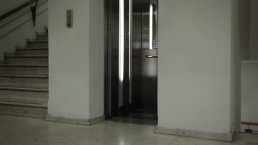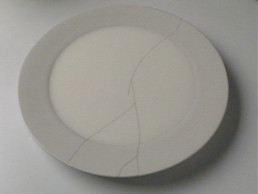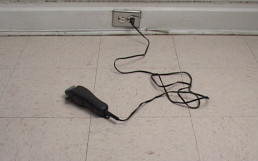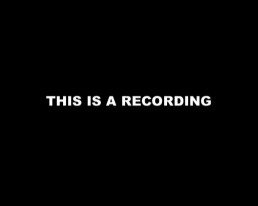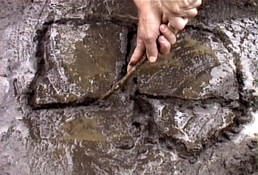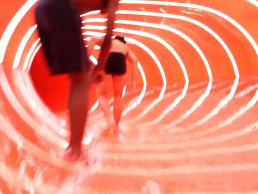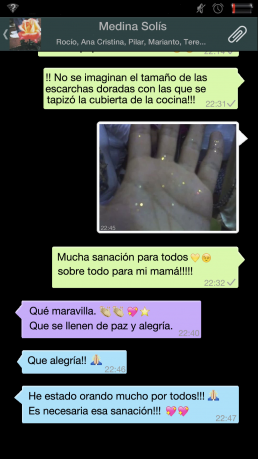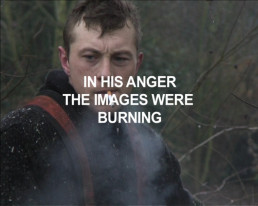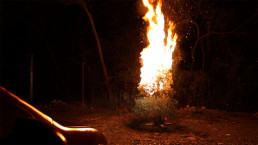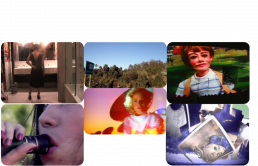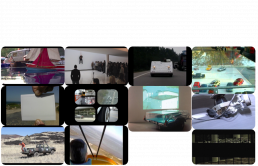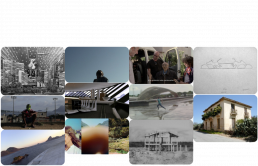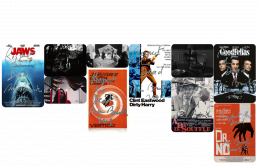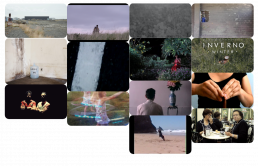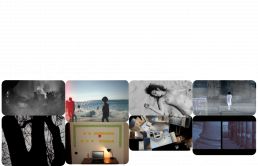28 Agosto, 23h15
Museu Nacional de História Natural e da Ciência
Cut to Violence
Curadoria de Paula López Zambrano
Duração da sessão 54’
Arte e violência são os dois cortes afiados produzidos simultaneamente por uma faca de dois gumes. Este programa reúne uma seleção de vídeos por artistas vindos de diferentes geografias, mas que partilham preocupações semelhantes. Com implicações subtis e efeitos poderosos, estes vídeos provocam uma abordagem em direção à indefinição do sentido, escuridão, visibilidade, e estrago com os seus efeitos recíprocos na reparação. Eles oferecem uma compreensão sobre a relação entre poder e política, ridículo e absurdo, género e violência estrutural.
Nos seus discursos, Martin Luther King disse que violência gera violência, ódio traz um maior ódio. A arte não consegue curar nenhum estrago, por vezes abre velhas feridas, e traz-nos pensamentos que nos fazem sentir mal. A arte pode desafiar a violência, a arte pode reapresentar a violência, a arte pode também provocar violência ou pode ser violenta. Mas no final, a arte esconde a violência com o seu véu de estética inerente. Daí o título Cut to Violence: peças de vídeo, imagens e sons que confrontam a violência de forma dolorosa e estética, dura e sedutora, nos dois gumes.
Mauricio Alejo, An Ordinary Glass to Lean Against Any Given Wall, 2015, 2’00’’
Este vídeo é baseado numa vaga memória de uma instalação que o artista testemunhou há 20 anos atrás. A instalação consistia num simples copo inclinado contra uma parede de um museu. O título era tão descritivo e simples com a peça em si, mas muito poderoso. O vídeo mostra um copo inclinado contra a porta de um elevador, eventualmente a porta abre e o copo cai e parte-se. Contudo, um resultado mais violento acontece quando as portas continuam a fechar-se mesmo com os restos dos estilhaços de vidro no chão a obstruírem. Neste vídeo, o vidro é levado para o domínio público e é gravado nas instalações da Secretaria de Governação da Cidade do México.
Mauricio Alejo, Crack, 2002, 0’41’’
Um prato branco rachado encontra-se num limbo branco. De seguida, o som de alguém a soprar a câmara faz com que se parta. Além da transformação física e da revelação feita por um simples gesto, encontra-se uma compreensão mais transcendente: a da incerteza onde a realidade é representada por meios tecnológicos.
Mauricio Alejo, Misconduct, 2006, 1’38’’
Um barbeador elétrico move-se em círculos no chão devido às suas próprias vibrações. A máquina arrasta-se em torno do seu cabo de alimentação de uma forma obstinada, até que o entrelaçamento faz com que o cabo de alimentação se solte da ficha elétrica e que a máquina pare. Este vídeo infunde o movimento irracional da máquina com o que poderia ser entendido como força de vontade, criando uma narrativa de aniquilação autoinfligida.
Jordan Baseman, July the Twelfth 1984, 2003-2014, 13’
July the Twelfth 1984 fazia parte da primeira exposição individual de Jordan Baseman, don’t stop ‘till you get enough na Matt’s Gallery em 2005, e desde então foi completamente refeito para a exposição a solo Nobody Likes Us But We Don’t Care na Kunstverein Freiburg, 2014. July the Twelfth 1984 é uma animação experimental baseada na gravação de áudio, ao vivo, da contagem regressiva para a execução de Ivon Ray Stanley, realizada pelo Estado da Geórgia.
Cortesia do artista e da Matt’s Gallery, Londres
Clemencia Echeverri, De Doble Filo, Actos del Habla (Double-edged, Acts of Speech), 1998, 5’28’’
«Usando diferentes abordagens, Clemencia Echeverri explorou os problemas relacionados com os efeitos colaterais que a violência e os conflitos armados têm na sociedade Colombiana. No vídeo De Doble Filo, Actos del Habla, Clemencia Echeverri salienta a intensificação das catástrofes produzidas pela capacidade destrutiva dos seres humanos, e que as mesmas podem ser comparáveis ao poder que as forças naturais têm. A única diferença reside no facto da dinâmica da devastação gerada por indivíduos e grupos ser cada vez maior, e não parecer ser governada por uma destruição de caráter cíclico onde destruição e construção alternam.» Carmen María Jaramillo
Patrick Goddard, Free Radicals, 2013, 5’45’’
Um poema de verso livre é lido sobre um ponto de vista visual do que parece ser um escorrega de água. Ocasionalmente, uma segunda voz entra na conversa como um desordeiro na parte de trás, ridicularizando a pomposidade do narrador principal. O poema gira vagamente em torno de ideias de ‘caos linguístico’, o vigor político de quem está de fora e uma rutura da linguagem. Um disléxico diz a outro: “Consegues sentir o cheiro da revolução?”, o segundo responde: “Eu nem consigo soletrar o meu próprio maldito nome, companheiro.” (Isso nem sequer faz sentido.) E, com este feitiço, as ideias desintegram-se num conceito de morte súbita, flácido como uma piada resumida.
Maria Jose Sesma, Mea Culpa, 2014, 4’55’’
Conversa online entre um grupo de familiares, durante Julho e Agosto de 2013 em Torreón, Estado de Coahuila, México.
Richard Hards, What kind of tone is that?, 2014, 5’33’’
What kind of tone is that? é um vídeo que intercala um screen test do ator Arno Frisch com imagens caseiras de uma câmara de vigilância de um incidente num conjunto habitacional em Londres. Frisch lê um guião que narra a relação do artista com o vídeo.
Laure Prouvost, It, Heat, Hit, 2010, 6’
It, Heat, Hit é um novo trabalho que constrói e impulsiona uma história inferida através de uma sequência de movimento rápido de comentários escritos e excertos de incidentes e imagens quotidianas que foram filmadas pela artista. Imagens inocentes e agradáveis, como um sapo a nadar ou uma rua coberta de neve, são seguidas por declarações de amor e violência implícita. Estas são entrecortadas com imagens estranhas, desconexas, como close-ups de flores, partes do corpo ou alimentos. O humor do filme torna-se gradualmente mais escuro e mais inquietante, embora nada seja afirmado diretamente. A intensidade crescente do filme é reforçada pelo ritmo opressivo de um tambor que acompanha os fragmentos de música e voz. Tal como acontece com outros filmes de Prouvost, o ritmo testa os limites da perceção e torna difícil assimilar cada imagem e comentário. A repetida visualização muda subtilmente, o que é entendido de cada vez, enquanto Prouvost destaca o caráter escorregadio do significado e das noções de realidade.
Oswaldo Ruiz, Tree, 2011, 3’
Uma cena noturna onde uma árvore é queimada, um símbolo a ser queimado. Um carro sugere uma presença, alguém que observa a cena de um sítio desconhecido, o carro também funciona como um espelho distorcido que reflete o que está a acontecer. O vídeo destina-se a ser habitado pela contemplação da transformação, enquanto a árvore muda a sua forma e se torna num esqueleto.
Keef Winter, Streetwalking, 2015, 5’53’’
Streetwalking movimenta-se entre as ruas da cidade de Belfast e Bahrain com snapshots de dois festivais historicamente importantes. Em Belfast, os locais Orangemen (membros da organização protestante Ordem Laranja) marcham em redor dos bairros centrais martelando tambores e assobiando flautas como forma de celebração do ‘Twelfth’ (também conhecido como Orangemen’s Day, é uma celebração que acontece no dia 12 de Julho todos os anos), adornando as suas faixas e banners de vitória. No Bahrain, xiitas marcham em redor de Manama durante o dia de luto de ‘Ashura’ num ritual onde batem no seu próprio peito e se autoflagelam, chamado ‘tatbeer’, usando lâminas nas extremidades das correntes para cortarem os seus corpos em uníssono.
August 28, 23h15
Museu Nacional de História Natural e da Ciência
Cut to Violence
Curatorship by Paula López Zambrano
Total running time 54’
Art and violence are the simultaneous two sharp cuts produced by a double-edged knife. This programme gathers a selection of video works from artists coming from different geographies, but sharing similar concerns. With subtle implications and powerful effects, these videos provoke an approach towards the elusiveness of meaning, the human condition in relation to belief and devotion, darkness, visibility, and damage with its reciprocal effect into repair. They offer an insight into the relationship between power and politics, ridiculous and absurd, gender and structural violence.
In his speeches, Martin Luther King said that violence begets violence, hatred brings a greater hatred. Art cannot heal any damage, sometimes it opens old wounds, it brings out thoughts that make us feel unwell. Art can challenge violence, art can represent violence, art can also provoke violence or art can be violent. But in the end, art conceals violence with its inherent aesthetic veil. Hence the title Cut to Violence: video pieces, images and sounds that confront violence in a hurtful and aesthetic, harsh and seductive double-edged way.
Mauricio Alejo, An Ordinary Glass to Lean Against Any Given Wall, 2015, 2’00’’
This video is based on a vague memory of an installation the artist witnessed 20 years ago. It was a simple glass leaned against one of the museum’s wall. The title was as descriptive and simple as the piece itself; but very powerful. The video captures a glass leaning against an elevator’s door; eventually the door opens and the glass falls and breaks. However, a more violent outcome happens when the doors continue to close even with the obstructing pieces of the glass’s leftovers on the floor. In this video, the glass is taken to the public realm, and it’s recorded by the Secretaría de Gobernación premises in Mexico City.
Mauricio Alejo, Crack, 2002, 0’41’’
A white cracked dish lies on a white limbo. Then, the sound of someone blowing off the camera causes the crack to break. Beyond the physical transformation and the revelation done by this simple gesture, lies a more transcendent realization: that of the uncertainty in which reality is depicted by technological means.
Mauricio Alejo, Misconduct, 2006, 1’38’’
A plugged-in electric shaver lies on the floor and moves in circles due to its own vibrations. The machine drags around its power cable in a stubborn way until the entanglement causes the power cable to lose contact and the machine to stop. This video infuses the machine’s mindless movement with what could be perceived as willpower, creating a narrative of a self-inflicted annihilation.
Jordan Baseman, July the Twelfth 1984, 2003-2014, 13’
July the Twelfth 1984 took part of Jordan Baseman’s first solo show don’t stop ‘till you get enough at Matt’s Gallery in 2005, and has since been entirely remade for the solo exhibition Nobody Likes Us But We Don’t Care at Kunstverein Freiburg, 2014. July the Twelfth 1984 is an experimental animation based on the live audio recording of the countdown to Ivon Ray Stanley’s execution by the State of Georgia.
Courtesy of the artist and Matt’s Gallery, London
Clemencia Echeverri, De Doble Filo, Actos del Habla (Double-edged, Acts of Speech), 1998, 5’28’’
«Using different approaches, Clemencia Echeverri has explored the problems related to the collateral effects that violence and the armed conflicts have on Colombian society. In the video De Doble Filo, Actos del Habla (Double-edged, Acts of Speech), Clemencia Echeverri highlights the intensification of the catastrophes produced by the destructive ability of human beings and which can be compared to the power that natural forces have. The only difference lies in the momentum of the devastation created by individuals and groups for its increase, and does not seem to be ruled by a cyclical character where destruction and construction alternate.» Carmen María Jaramillo
Patrick Goddard, Free Radicals, 2013, 5’45’’
A free verse poem is read by the visual point of view of what appears to be a water slide. Occasionally, a second voice chimes in like a heckler from the back, deriding the pomposity of the primary narrator. The poem loosely revolves around ideas of ‘chaos linguistics’, the political vigour of the outsider and breakdown of language. One dyslexic says to another: “Can you smell revolution?”, the second replies: “I can’t even spell my own fucking name mate.” (That doesn’t even make sense.) And with this spellbind the ideas disintegrate into a cot death concept, flaccid as a summarised joke.”
Maria Jose Sesma, Mea Culpa, 2014, 4’55’’
Online conversation between a family group, during July and August 2013 in Torreon, Coahuila.
Richard Hards, What kind of tone is that?, 2014, 5’33’’
What kind of tone is that? is a video that intersperses a screen test with the actor Arno Frisch with homemade CCTV footage of an incident on a housing estate in London. Frisch reads from a script that recounts the artist’s relationship to the video.
Laure Prouvost, It, Heat, Hit, 2010, 6’
It, Heat, Hit is a new work that constructs and propels an inferred story through a fast-moving sequence of written commentary and excerpts of everyday incidents and pictures that have been shot by the artist. Innocent and pleasing images, such as a swimming frog or snowy street scene, are followed by statements of love and implied violence. These are intercut with strange, disconnected images, such as close-ups of flowers, body parts or food. The mood of the film gradually becomes darker and more unsettling, though nothing is stated directly. The growing intensity of the film is reinforced by the oppressive rhythm of a drum which accompanies snatches of music and speech. As with Prouvost’s other films, the pace tests the limits of perception and makes it hard to take in every image and comment. Repeated viewing subtly shifts what is understood each time, as Prouvost highlights the slipperiness of meaning and notions of reality.
Oswaldo Ruiz, Tree, 2011, 3’
A nocturnal scene where a tree is burnt, it is a symbol being burnt. A car suggests a presence, someone observing the scene from an unknown place, the car also works as a distorted mirror that reflects all what is happening. The video is intended to be inhabit by contemplation of transformation, as the tree changes its form to become a skeleton.
Keef Winter, Streetwalking, 2015, 5’53’’
Streetwalking moves between the city streets of Belfast and Bahrain with snapshots of two highly charged historic festivals. In Belfast, the local Orangemen march around the central districts hammering drums and whistling flutes on the ‘Twelfth’, adorning their victory sashes and banners. In Bahrain, Shi’ite men march around Manama during the mourning day of ‘Ashura’ with chest-beating and a self-flagellation ritual called ‘tatbeer’ using razors on the ends of chains to slash their bodies in unison.
